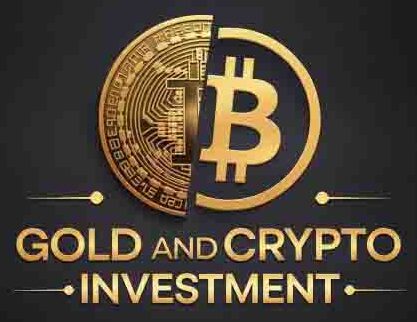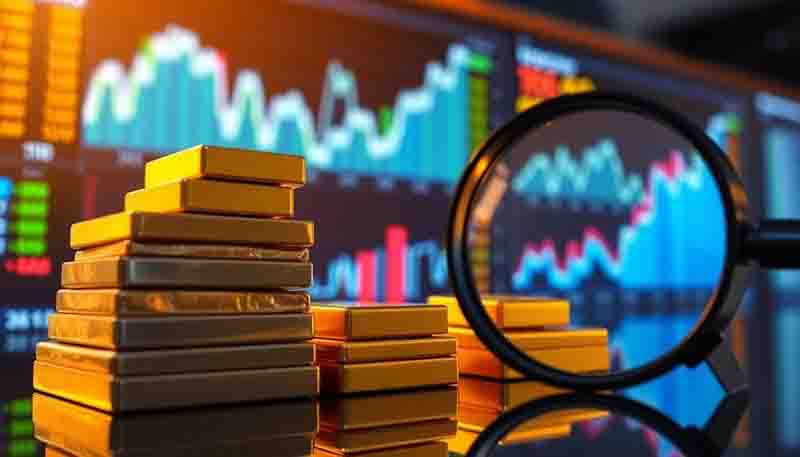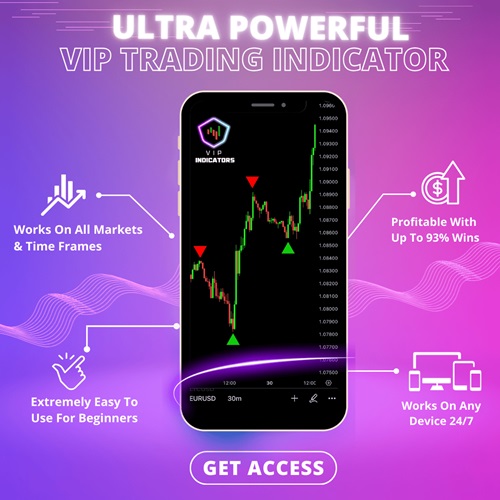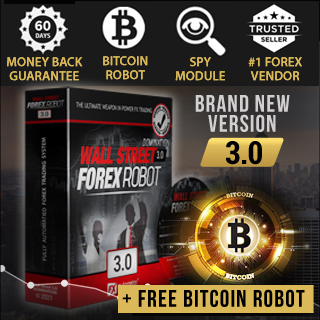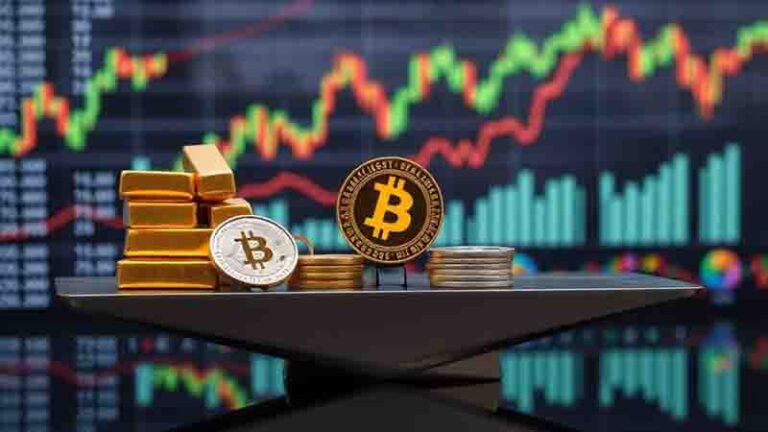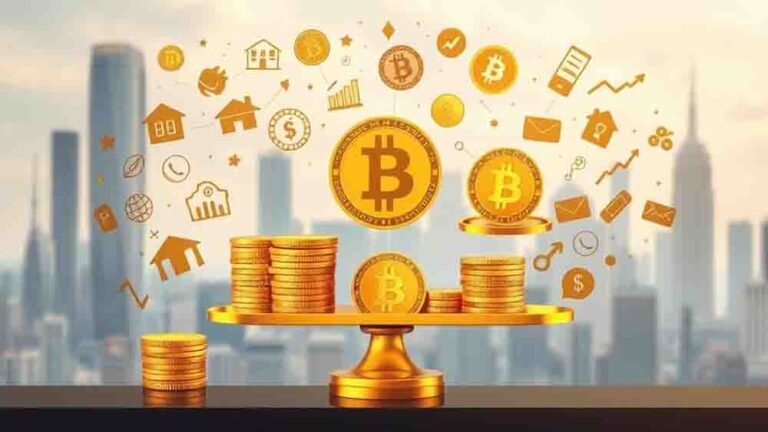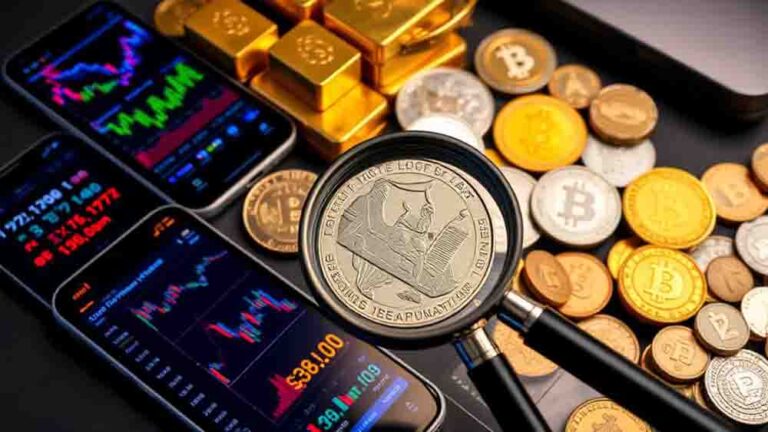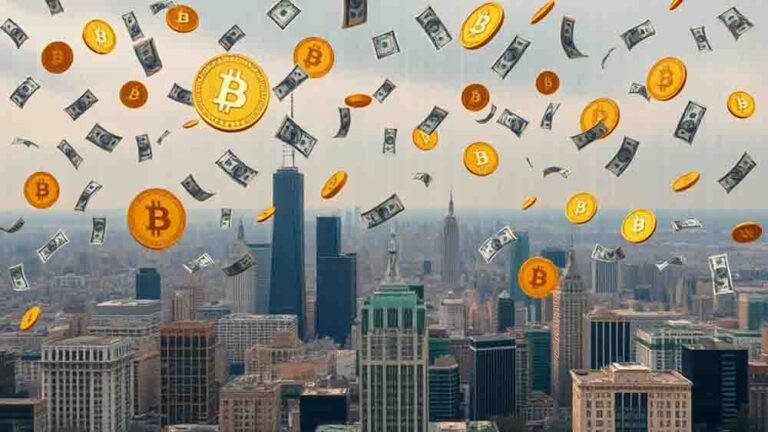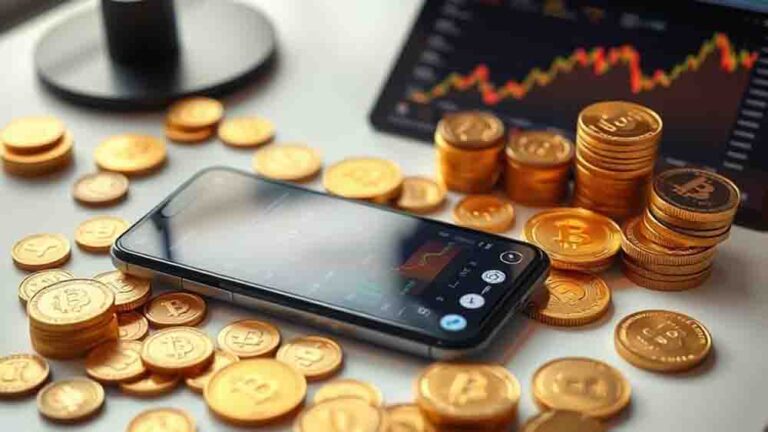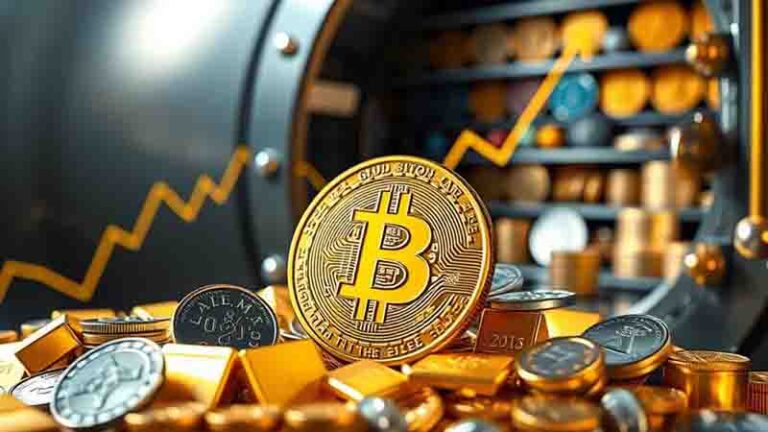How to Choose Between Metal and Digital ETFs
Note: This post may contain affiliate links, and we may earn a commission (with No additional cost for you) if you purchase via our link. See our disclosure for more info. The gold and crypto world is constantly changing. This is not financial, investment, legal, or professional advice. So, please verify the information on the gold and cryptocurrency provider’s websites.
In the glittering domain of investment options, metal and digital ETFs stand as contrasting beacons, each offering unique advantages to the savvy investor. You're faced with a pivotal decision that can greatly impact your portfolio's performance and risk profile. As you weigh your options, you'll need to take into account factors like market volatility, liquidity needs, and your long-term financial goals. But that's just the tip of the iceberg. There's a complex interplay of elements that'll influence your choice, and understanding these nuances is essential for making an informed decision that aligns with your investment strategy. Are you ready to uncover the key differences that'll shape your ETF selection?
Key Takeaways
- Consider your risk tolerance, as metal ETFs generally offer more stability compared to potentially volatile digital ETFs.
- Evaluate liquidity needs, with metal ETFs trading on major exchanges and digital ETFs offering 24/7 trading options.
- Analyze fee structures, comparing management fees for metal ETFs against transaction costs for digital ETFs.
- Assess regulatory landscape, noting established frameworks for metal ETFs versus evolving regulations for digital ETFs.
- Examine portfolio diversification goals, balancing traditional metal ETFs with innovative digital options for a well-rounded strategy.
Understanding Metal and Digital ETFs
Two key players in the precious metals investment arena are Metal and Digital ETFs. These investment vehicles offer distinct approaches to gaining exposure to precious metals, each with its own set of advantages and considerations.
Metal ETFs:
- Track physical metals' prices
- Provide liquidity without physical ownership
- Often physically-backed, with bullion stored in secure vaults
- May have higher management fees and larger minimum investments
Digital ETFs:
- Utilize blockchain technology for ownership representation
- Enable fractional ownership and 24/7 trading
- Typically offer lower transaction fees and greater accessibility
- Remove need for storage but introduce potential regulatory risks
When choosing between Metal and Digital ETFs, consider your investment strategies and risk tolerance. Metal ETFs offer a more traditional approach, with a direct claim on physical assets. They can serve as a hedge against inflation and provide a sense of security.
Digital ETFs, on the other hand, leverage technology to offer increased flexibility and potentially lower costs.
Both options provide exposure to precious metals, but their structures differ markedly. Metal ETFs may appeal to those seeking tangible asset backing, while Digital ETFs might attract investors looking for technological innovation and ease of transfer.
Understanding these differences is essential for making informed investment decisions.
Risk and Volatility Comparison
Many investors overlook the essential differences in risk and volatility between Metal and Digital ETFs. When comparing these investment options, it's vital to evaluate several factors:
- Physical metals vs. ETFs: Physical precious metals like silver and gold offer intrinsic value and generally experience less volatility than ETFs. They're less affected by short-term market fluctuations, providing a more stable investment.
- Management fees: ETFs often incur ongoing costs, which can impact your overall returns. Physical metals don't have these fees, potentially reducing your long-term risk.
- Liquidity and market sensitivity: While ETFs offer high liquidity, allowing for quick transactions, this can lead to increased volatility. Physical metals may be less affected by short-term market sentiment.
- Digital ETF risks: Digital ETFs face unique challenges, including regulatory uncertainties and potential security threats. These factors can contribute to their volatility compared to traditional physical metal investments.
- Historical performance: Precious metals can serve as an inflation hedge, but metal ETF performance can vary greatly based on market dynamics.
When choosing between metal and digital ETFs, carefully assess your risk tolerance and investment goals.
Weigh the trade-offs between convenience, liquidity, and potential volatility to make an informed decision.
Performance Analysis and Trends
When comparing metal and digital ETFs, you'll find that historical returns play a vital role in your decision-making process.
Gold ETFs, for instance, have demonstrated strong performance over the past decade, outpacing many equity indices and providing a reliable hedge against market volatility.
As you evaluate your investment options, consider how these funds react to economic uncertainties, with metal-backed ETFs often showing increased inflows during turbulent times, reflecting their perceived stability and safe-haven status.
Historical Return Comparison
Performance analysis of metal and digital ETFs reveals a complex landscape of historical returns. When comparing these investment options, you'll find that gold ETFs have demonstrated strong performance, particularly during economic downturns.
With an average annual return of around 10% over the past decade, gold ETFs closely track the price of physical gold, offering investors a liquid alternative to holding the precious metal.
Digital gold investments, while newer to the market, have shown promising growth. These platforms have reported substantial inflows, reflecting investors' increasing interest in convenient, online investment options.
However, it's vital to recognize that digital assets may carry different risks compared to traditional gold ETFs.
Silver ETFs have also shown notable performance, though their returns tend to fluctuate more based on industrial demand and market conditions. This volatility can mirror the broader commodities market, potentially offering higher returns but with increased risk.
When choosing between metal and digital ETFs for your portfolio, consider:
- Historical performance during economic downturns
- Correlation with other assets in your portfolio
- Liquidity and transaction costs
- Your risk tolerance and investment goals
Market Volatility Impact
Market volatility can shake up the performance of both metal and digital ETFs, often leading to divergent trends. During periods of economic uncertainty, you'll notice increased interest in metal ETFs, particularly those backed by precious metals like gold and silver. These investments serve as a hedge against inflation and currency fluctuations, providing a safe haven for your financial wellness.
Digital ETFs, while offering enhanced liquidity and ease of access, may experience more significant price swings during market turbulence. However, they allow for quick transactions and strategic positioning in response to rapid market changes.
| ETF Type | Volatility Response | Investor Appeal |
|---|---|---|
| Metal | Stability | Safe Haven |
| Digital | Price Swings | Quick Trades |
When choosing between metal and digital ETFs, consider your risk tolerance and investment goals. Metal ETFs typically see increased assets under management during market downturns, reflecting investor confidence in tangible assets. For example, gold ETFs experienced notable growth in the first half of 2023 due to global economic instability.
Both options offer unique advantages:
- Metal ETFs: Inherent stability of physical assets
- Digital ETFs: Enhanced trading flexibility
Ultimately, your decision should align with your overall investment strategy and market outlook.
Liquidity and Trading Considerations
Taking into account the liquidity and trading aspects, both metal and digital ETFs offer investors the ability to buy and sell shares with relative ease.
Metal ETFs, like those tracking silver and gold, provide high liquidity as they trade on major stock exchanges throughout the day. Digital ETFs, representing assets like digital gold, also offer liquidity but may have different trading hours depending on the platform.
When choosing between metal and digital ETFs, you'll want to reflect on:
- Trading costs, including management fees and transaction fees
- Market participants and overall liquidity
- Bid-ask spreads, which can impact your investment returns
Metal ETFs typically have lower management fees, while digital ETFs may involve additional transaction fees.
The number of market participants can affect liquidity, with traditional metal ETFs often having an advantage. Pay close attention to bid-ask spreads in both types of ETFs, as wider spreads indicate lower liquidity and higher trading costs.
To maximize your investment potential, evaluate these factors carefully.
Contemplate your trading frequency, investment horizon, and risk tolerance when deciding between metal and digital ETFs. By understanding the liquidity and trading considerations of each option, you'll be better equipped to make an informed decision that aligns with your financial goals.
Regulatory Landscape and Compliance
The regulatory landscape for metal and digital ETFs presents a complex tapestry of rules and oversight. When choosing between these investment vehicles, you'll need to evaluate the different compliance requirements and regulatory bodies involved.
For metal ETFs, the Securities and Exchange Commission (SEC) is the primary regulator in the U.S. The SEC mandates transparency and strict reporting standards, ensuring investor protection through regular audits and disclosures of holdings. Additionally, the Commodity Futures Trading Commission (CFTC) oversees futures markets, which can impact metal ETFs trading on these exchanges.
Digital ETFs, especially those involving cryptocurrencies, face a more varied regulatory environment globally. Some jurisdictions have extensive frameworks, while others remain less defined. This can create compliance challenges and potential risks for investors.
Both metal and digital ETFs must adhere to anti-money laundering (AML) and know your customer (KYC) regulations. However, the evolving nature of digital assets may lead to more frequent regulatory changes, potentially affecting liquidity and operational aspects.
When deciding between metal and digital ETFs, evaluate:
- The stability of the regulatory environment
- Compliance costs and their impact on returns
- Potential for future regulatory changes and their effects on the ETF's performance
Portfolio Diversification Strategies
In light of the ever-changing investment landscape, portfolio diversification strategies play an essential role when choosing between metal and digital ETFs. As an investor, you'll want to take into account a mix of both to hedge against inflation and economic uncertainty while maintaining exposure to traditional markets.
Metal ETFs, such as those tracking gold and silver, offer intrinsic value and can serve as a reliable inflation hedge. Digital ETFs, on the other hand, provide convenience and liquidity.
To create a well-rounded portfolio, think about incorporating:
- Metal ETFs for stability and long-term value preservation
- Digital ETFs for ease of trading and market accessibility
- Sector ETFs to target specific industries that may outperform in various economic cycles
Regularly rebalancing your portfolio is essential for effective risk management and aligning with your financial goals. This process guarantees that your investments in metal and digital ETFs remain proportionate to your desired asset allocation.
Additionally, smart beta ETFs can complement traditional metal ETFs by providing exposure to non-traditional strategies, potentially improving your risk-adjusted returns. By thoughtfully combining these ETF types, you'll be better positioned to navigate market fluctuations and achieve your investment objectives.
Costs and Fees Breakdown
When comparing metal and digital ETFs, it's essential to understand the difference between upfront and ongoing expenses.
You'll find that physical metals often come with higher initial costs, including dealer premiums and shipping fees, while ETFs typically have lower entry barriers but charge annual management fees.
As you weigh your options, don't overlook potential hidden fees, such as storage costs for physical metals or transaction fees for frequent ETF trades, which can greatly impact your overall investment returns.
Upfront vs. Ongoing Expenses
Choosing between physical precious metals and ETFs involves carefully weighing the upfront and ongoing expenses. Physical metals require substantial initial investment due to dealer premiums, shipping fees, and storage costs.
ETFs, on the other hand, typically have lower upfront costs but come with ongoing management fees that can impact long-term returns.
When considering physical metals, you'll need to factor in:
- Dealer premiums and shipping costs
- Secure storage expenses
- Insurance fees to protect your investment
ETFs offer greater liquidity and lower transaction fees, allowing for quicker buying and selling without the costs associated with physical possession.
However, you'll need to be aware of the annual management fees, which can range from 0.1% to over 1%.
To make informed investment decisions, it's essential to analyze the total cost of ownership for both options.
Consider how upfront costs and ongoing expenses will affect your returns over time. While physical metals may have higher initial costs, ETFs' management fees can accumulate considerably in the long run.
Evaluate your investment timeline, risk tolerance, and liquidity needs to determine which option aligns best with your financial goals.
Hidden Fee Considerations
Many investors overlook essential hidden fees when comparing metal and digital ETFs, potentially eroding their returns over time. To make an informed decision, you'll need to contemplate several factors beyond the obvious costs.
For metal ETFs:
- Management fees typically range from 0.25% to 1.00% annually
- Physical delivery and storage costs may apply, increasing total ownership expenses
- Bid-ask spreads can impact buy and sell prices
For digital ETFs:
- Generally lower fees due to their online nature
- Transaction fees vary by platform and can affect overall costs
- Bid-ask spreads also apply, influencing trading prices
When evaluating both types of ETFs:
- Examine expense ratios carefully
- Factor in potential trading commissions
- Contemplate the impact of all fees on your net returns over your investment horizon
To maximize your returns, you should:
- Compare total cost structures, including hidden fees
- Assess how fees may compound over time
- Evaluate the trade-off between costs and potential benefits
Frequently Asked Questions
Which One Is Better, Digital Gold or Gold ETF?
When choosing between digital gold and gold ETFs, consider your investment goals and risk tolerance.
Digital gold offers accessibility with low entry points and physical delivery options, while gold ETFs provide liquidity and ease of trading on exchanges.
Compare their investment risks, long-term performance, and tax implications. Analyze how market volatility affects each option.
Consider storage solutions for digital gold and management fees for ETFs.
Ultimately, your choice depends on your investment strategy, whether you prioritize accessibility or portfolio diversification through market exposure.
How to Determine Which ETFS to Buy?
Did you know that over 7,000 ETFs are available globally?
To determine which ETFs to buy, you'll need to contemplate several factors. Start with a risk assessment and define your investment goals.
Research market trends and evaluate expense ratios. Analyze liquidity factors and historical performance.
Don't forget tax implications and how the ETF fits into your asset allocation and diversification strategy.
Compare management fees between options.
Which Is Better, Digital Gold or Sovereign Gold Bond?
When choosing between digital gold and sovereign gold bonds, consider your investment strategies and risk assessment.
Digital gold offers greater liquidity and lower entry points, ideal for short-term goals. SGBs provide interest income and tax benefits, suiting long-term investors.
Evaluate market trends, storage costs, and security measures for digital gold. For SGBs, examine historical performance and diversification benefits.
Your decision should align with your investor preferences, balancing factors like liquidity, returns, and holding period to match your financial objectives.
What Order Type Should I Use to Buy ETFS?
Did you know that over 70% of ETF trades are executed using market orders?
When buying ETFs, you'll need to choose an order type that aligns with your trading strategy and investment goals. Consider these options:
- Market orders: For quick execution at current prices
- Limit orders: To control your purchase price
- Stop orders: To manage risk or lock in profits
- Trailing stop: For dynamic price protection
Your choice should factor in liquidity considerations, cost efficiency, and potential tax implications.
Evaluate fill types and adjust your approach based on market conditions to optimize your ETF purchases.
Conclusion
In your journey through the financial forest, you'll encounter both metal and digital ETF paths. Like choosing between a sturdy oak or a flexible willow, each has its strengths. Consider your risk tolerance, liquidity needs, and investment goals as you navigate. Weigh the stability of metal ETFs against the agility of digital options. Examine costs, regulations, and historical trends carefully. By understanding these factors, you'll find the right ETF trail to lead you toward your financial destination.
